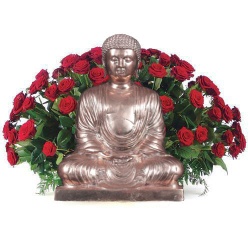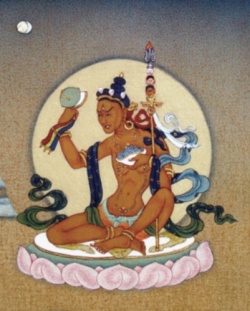A Look at the Diversity of the Gzhan stong Tradition
A Look at the Diversity of the Gzhan stong Tradition
Anne Burchardi, University of Copenhagen
Abstract: This article introduces two studies by classical Tibetan Buddhist scholars that explain the range of meanings of the term gzhan stong. The two texts – one by Pema Bidza (twentieth century), the other by Tāranātha (1575-1634) – are analytical studies that summarize and compare the various views of previous scholars who wrote on gzhan stong.
Such interpretive studies are valuable in that they present us with different ways of interpreting the heterogeneous material classified under the rubric “gzhan stong.” They also suggest ways of contextualizing the different levels of discourse found within this material.
Introduction
Descriptions of zhentong are frequently encountered in the context of polemical discourse, where it stands in contradistinction to rangtong.2
Some scholarly attention has been paid to the historical context of the controversies involving prominent zhentong masters and their writings.
But so far the attention given to the actual differences of interpretation of the term zhentong in its various hermeneutical and philosophical contexts has been quite limited in non-Tibetan publications – limited, that is, when we consider the extent of primary sources available in Tibetan.3
Fortunately, this situation is improving year by year, and it is my hope that the present reflections will further our general knowledge of the zhentong tradition in some small way.
There is a vast amount of material waiting to be explored that can inform us about the zhentong views held by various Tibetan masters. Here I would like to introduce two analytical studies that show various ways of viewing and defining zhentong.
[1] This article is a revised and enlarged version of the paper presented at the Tenth Seminar of the International Association for Tibetan Studies (6th-12th September 2003), Oxford. Thanks to Gene Smith, David Seyfort Ruegg, José Cabezón, and Karl Brunnhölzl for advice.
[2] Zhentong may be translated as “empty of other” and rangtong as “empty of self(-nature).”
There is general agreement about rangtong referring to relative or conventional phenomena.
So-called zhentong proponents will generally – but not necessarily – consider zhentong to refer exclusively to ultimate phenomena.
See Wangchuk Dorji, “The rÑiṅ-ma Interpretations of the Tathāgatagarbha Theory,” Wiener Zeitschrift für die Kunde Südasiens48 (2004): 171-213, and especially 171 n. 3, for an account of various usages of zhentong.
[3] The following are some significant studies in English relevant to the study of zhentong: David Seyfort Ruegg, Buddha Nature, Mind and the Problem of Gradualism in a Comparative Perspective:
On the Transmission and Reception of Buddhism in India and Tibet (London: School of Oriental and African Studies, University of London, 1989); Susan Hookham, The Buddha Within (Albany: SUNY Press, 1991); Matthew Kapstein,
The ’Dzam thang Edition of the Collected Works of Kun mkhyen Dol po pa Shes rab rGyal mtshan: Introduction and Catalogue (New Delhi: Shedrup Books, 1992); Cyrus Stearns, The Buddha from Dolpo: A Study of the Life and Thought of the Tibetan Master Dolpopa Sherab Gyaltshen (Albany: SUNY Press, 1999); Matthew Kapstein,
“We Are All Gzhan stong pas: Reflections on The Reflexive Nature of Awareness: A Tibetan Madhyamaka Defence, by Paul Williams,” Journal of Buddhist Ethics7 (2000): 105-25; E. Gene Smith, Among Tibetan Texts: History and Literature of the Himalayan Plateau, ed. Kurtis R. Schaeffer (Boston: Wisdom Publications, 2001).


